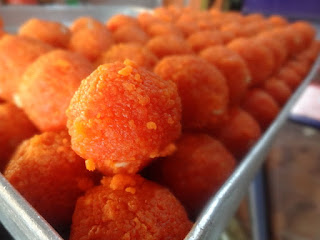The main problem with the small size fish was its preparation prior to frying and cooking. These fishes had plenty of scales and getting rid of these annoying externals was a major headache for the mothers of yore. Usually the task would be assigned to elderly women in the family who had plenty of spare time or to the maid servants. It was the days prior to the arrival of LPGs on the scene and when the ovens would be coal fired. The ash that was left over at the end of the day would be carefully preserved and would be used in descaling the fish.
Yes, the women had a tact – they would hold the fish in between the fingers, dip it in the ash and then proceed to remove the scales. After that was doe, they would clean the internals and pick up the next one. Obviously, it was a time consuming affair but, once these small size fish went through the cleaning process and was coked and served, the dish would leave its taste in the mouth long after the meal was over.
Unfortunately, such women are nowhere around. They have vanished like the coal fired ovens and fish lovers have to now depend on the fish seller to clean and cut the fish to size. As a result, the attraction of small size fish have been lost. The craze is now for large size fish like rohu, katla, bhetki, prawns etcetera – these are easy to handle. Same goes for the ones that do not have the annoying scales – fish like pabda or tangra.
Of course, exceptions will always be there – and, the exception is the hilsa. It has scales but no one is much bothered because, beneath those scales lies a fish that tastes divine. It may be sourced from the Padma River in Bangladesh or from our very own River Ganges but, it is certainly the Lord of the Rings. (to be continued …)
(Image courtesy wikimediacommons.org)
Some more interesting 'must reads'-
Qatar Airways changes its policy of sacking cabin crew for getting pregnant or getting married
Women’s hockey team into 2016 Rio Olympics after 36-years on Dhyan Chand’s birthday
Mumbai’s 9000-tonnes of daily plastic waste a major environment issue
Tila Tequila evicted from Celebrity Big Brother because of her praise of Hitler
‘Phantom’ – a Saif Ali Khan Katrina Kaif starrer with Mumbai 26/11 as backdrop
Cate Blanchett to be honored with BFI Fellowship at London Film Festival
Foolish robbers caught in London - they wore burqas but did not walk like women!!
Horror of free access to firearms – West Virginia 14-year-old takes 27 classmates hostage at gunpoint
Trained jihadists from Iraq and Syria returning to Europe to strike terror
A street food named jhal muri
A tribute to Kishore Kumar, the legend, on his 86th birthday
Indian kitchens must have ‘besan’



















